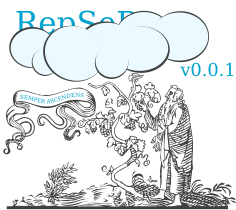The Reproducible Self Publishing toolkit demonstrates how to reuse your favourite data analysis workflows in order to seamlessly include quasi-dynamic publication-quality output (e.g. figures, tables, or statistic reports) in the most common science communication formats. Currently we provide examples for:
- Presentation Slides
- A Poster
- An Article
In these examples, analysis does not have to be initiated manually, and output elements do not have to be copied, manually scaled, styled, or otherwise manipulated. Data analysis is kept in one and only one place, and configurable styling is applied programmatically at the document or output element level. Data and code dependencies are monitored for update via checksums, and are either provided or specified, so that both the toolkit in its present incarnation - as well as your own derivatives - can be reproduced locally and autonomously by your colleagues, reviewers, students, and everybody else. As no binaries are tracked, publications built analogously to our examples are excellently suited for collaborative editing and version tracking, e.g. via Git.
- Reproducible Self-Publishing for Python-Based Research, at EuroSciPy 2018 in Trento (IT)
- Reproducible Self-Publication via PythonTeX, at EuroSciPy 2017 in Erlangen (DE)
- Reproducible Self-Publishing, at SciPy 2017 in Austin (TX,USA)
- Clone this repository:
git clone git@github.com:TheChymera/RepSeP.git - Install the dependencies (listed below).
- Edit the document files (
article.tex,poster.tex,slides.tex) to contain your own research output. - Compile the documents, e.g.:
./compile article,./compile poster,./compile slides,./compile all. - Distribute the output and links to your fork of this repository via your favourite outreach channels.
Dependencies can be automatically installed by any package manager which respects the Package Manager Soecification. This is done by running the install file as root with the following commands:
cd RepSeP/.gentoo
./install.sh -oav
The most precise description of the dependency graph (including conditionality) can be extracted from the RepSeP ebuild. Alternatively you may refer to the following list:
- matplotlib
- numpy
- statsmodels (>=
0.9.0) - pythontex (>=
0.16) - texlive-latex
- graphviz
- BehavioPy Poster, versions presented at:
- EuroSciPy 2017 in Erlangen (DE)
